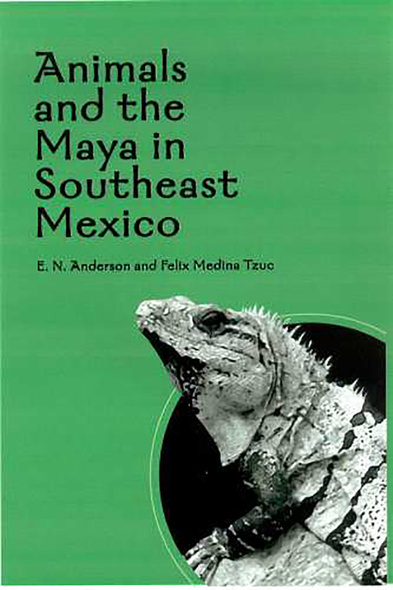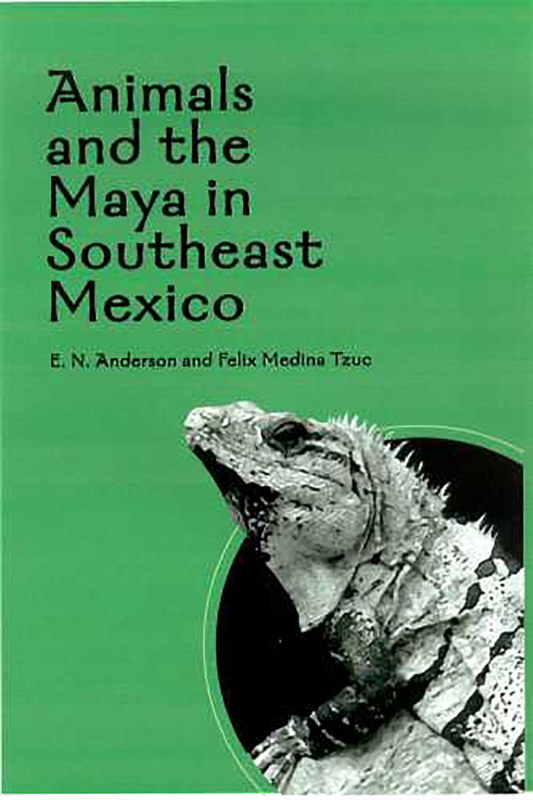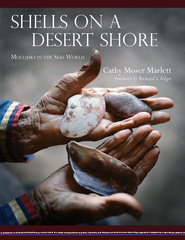Animals and the Maya in Southeast Mexico
By E. N. Anderson and Felix Medina Tzuc
The University of Arizona Press
In Mexico’s southeastern frontier state of Quintana Roo, game animals and other creatures that depend on old-growth forest are disappearing in the face of habitat destruction and overhunting. Traditionally, the Yucatec Maya have regarded animals as fellow members of a wider society, and in their religion animals enjoy the status of spiritual beings. But in recent years, the breakdown of cultural restraints on hunting has spiraled so far out of control that almost everything edible within easy reach of a road has become fair game.
This book combines the insights of an anthropologist with the hands-on experience of a Maya campesino with the aim of improving the management of Quintana Roo’s wild lands and animal resources. E. N. Anderson and Felix Medina Tzuc pool their knowledge to document Yucatec Maya understanding and use of animals and to address practical matters related to wider conservation issues.
This book combines the insights of an anthropologist with the hands-on experience of a Maya campesino with the aim of improving the management of Quintana Roo’s wild lands and animal resources. E. N. Anderson and Felix Medina Tzuc pool their knowledge to document Yucatec Maya understanding and use of animals and to address practical matters related to wider conservation issues.
Although the Yucatec Maya’s ethnobotany has been well documented, until now little has been recorded about their animal lore. Anderson and Medina Tzuc have compiled a wealth of information about traditional knowledge of animals in this corner of the Maya world. They have recorded most of the terms widely used for several hundred categories of animals in west central Quintana Roo, mapped them onto biological categories, and recorded basic information about wildlife management and uses.
The book reflects a wealth of knowledge gathered from individuals regarded as experts on particular aspects of animal management, whether hunting, herding, or beekeeping. It also offers case studies of conservation successes and failures in various communities, pointing to the need for cooperation by the Mexican government and Maya people to save wildlife. Appendixes provide an extensive animal classification and a complete list of all birds identified in the area.
Even though sustainable forestry has finally come to the Yucatán, sustainable game use is practiced by only a few communities. Animals and the Maya in Southeast Mexico is a complete ethnozoology for the region, offered in the hope that it will encourage the recognition of Quintana Roo’s forests and wildlife as no less deserving of protection than ancient Maya cities.
The book reflects a wealth of knowledge gathered from individuals regarded as experts on particular aspects of animal management, whether hunting, herding, or beekeeping. It also offers case studies of conservation successes and failures in various communities, pointing to the need for cooperation by the Mexican government and Maya people to save wildlife. Appendixes provide an extensive animal classification and a complete list of all birds identified in the area.
Even though sustainable forestry has finally come to the Yucatán, sustainable game use is practiced by only a few communities. Animals and the Maya in Southeast Mexico is a complete ethnozoology for the region, offered in the hope that it will encourage the recognition of Quintana Roo’s forests and wildlife as no less deserving of protection than ancient Maya cities.
‘…a beautifully written and researched book’—Biology
'It is a major contribution to the ethnobiology of Mexican Indians following in the tradition of Berlin's and Hunn's classic studies. It is written in a highly engaging style and is absorbing reading. Unlike typical ethnobiological studies, this book bravely assumes points of view and advances criticisms based on solid empirical assessment that may not be well received in some political arenas. Nonetheless, the book is not polemical and attempts to present issues in a well-balanced fashion.'—Cecil H. Brown, author of Language and Living Things
It is a highly personal account of what has been observed to have happened to the animal population in this region in the past decade or so, but also a scholarly and historical account that catalogs the animals recognized by the Maya people as well as their beliefs about many of them. It contributes not only to the ethnobiological and general literature on the modern Maya but also to that on Mesoamerica in general and theoretical ethnobiology in particular.'—Catherine Sweeney Fowler, University of Nevada
E. N. Anderson is Professor of Anthropology at the University of California, Riverside, and author of Ecologies of the Heart: Emotion, Belief, and the Environment. Felix Medina Tzuc was born in rural Yucatán in 1940 and has devoted a lifetime to learning about plants, animals, farming, and field skills in Quintana Roo’s tropical forests.






